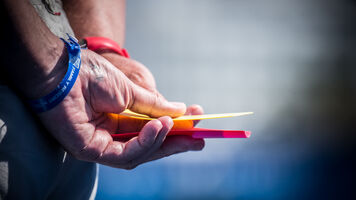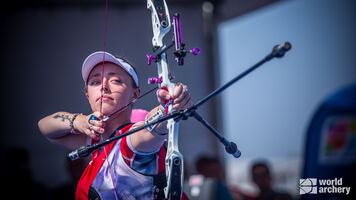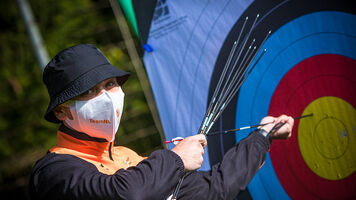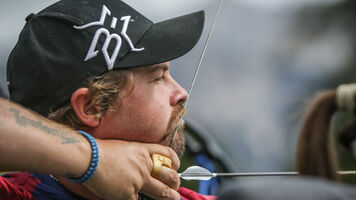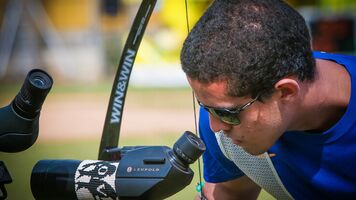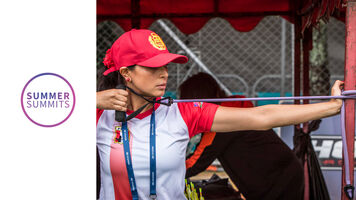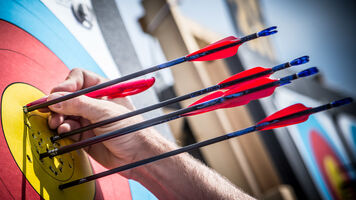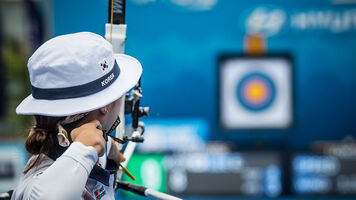Beginners guide to archery at the Rio 2016 Olympic Games
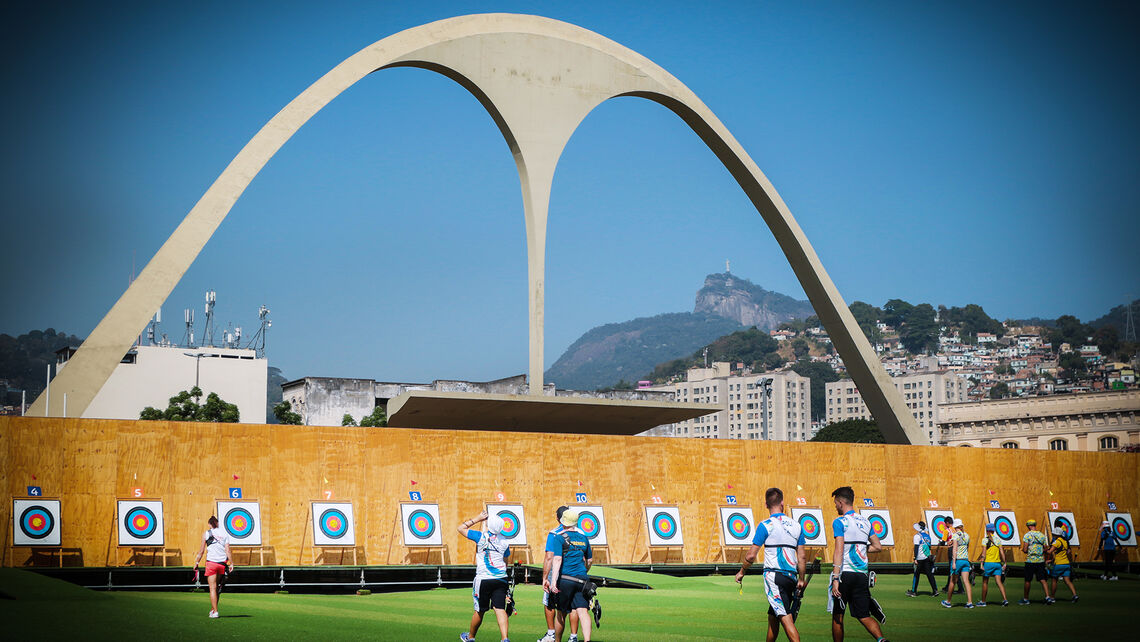
Archery was first introduced to the Olympics in 1900. It was included at the 1904, 1908 and 1920 Games, then had a 52-year hiatus from the Olympic Programme.
In 1972, archery returned to the Games and it has remained an Olympic sport ever since.
Factsheet: Rio 2016 Archery
- Venue: Sambodromo
- Dates: 5-12 August
- Number of athletes: 128 (64 men, 64 women)
- Number of medals: 4 (men’s, women’s, Men’s team, women’s team)
Defending Champions
- Man: OH JIN HYEK, Korea

- Woman: KI BO BAE, korea

- Men’s team: Italy
- Women’s Team: Korea
Three facts
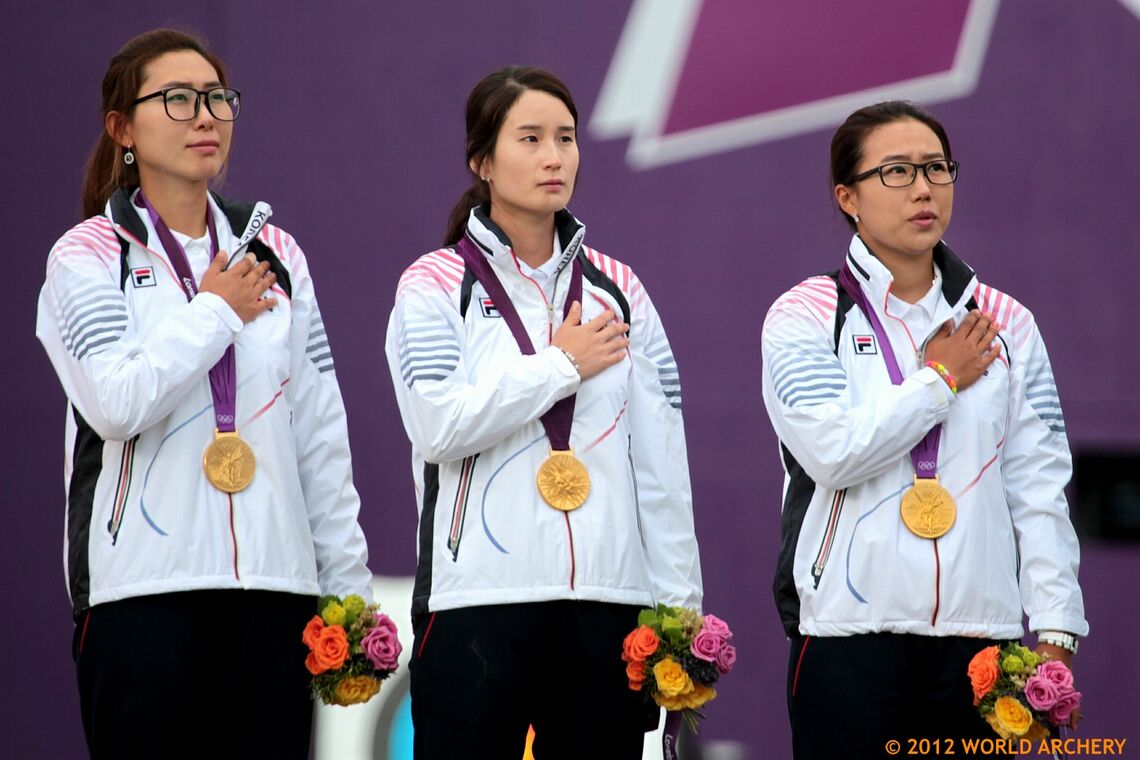
1) Korea’s women have never lost the Olympic team title. It was introduced in 1988 in Seoul, and they have seven gold medals since. At Rio 2016, Ki Bo Bae, Chang Hye Jin and Choi Misun go for number eight.
2) The world record for the men’s ranking round was set at 699/720 at the London 2012 Olympics by Korean archer Im Dong Hyun. In the lead up to Rio, many archers have come close to beating it – and the women’s mark of 686/720.
3) Kim Soo-Nyung was recently named World Archery’s best Olympic archer of all time.
Schedule
5 August: Ranking round men, ranking round women
6 August: Men’s team eliminations and finals
7 August: Women’s team eliminations and finals
6-10 August: Individual eliminations, rounds one and two
11 August: Women’s eliminations and finals
12 August: Men’s eliminations and finals
Equipment
The recurve bow is the modern evolution of traditional bows that have been used around the world for 1000s of years. The limbs curve away from the archer at the top, giving the “re-curve” its name.
An archer holds the riser, in the grip, and draws the string back to their face, placing their hand under their chin, using a finger tab to protect their fingers from the string. He or she aims at the target using a front sight.
The arrow, sitting on a rest attached to the riser, is propelled at speeds of over 200kph when the archer releases the string.
How it works
Athletes competing in archery at the Olympic Games use a recurve bow to propel arrows towards targets set 70 metres away. The targets measure 122cm in diameter, and have 10 concentric scoring rings, separated into five colours.
The inner colour, the gold, scores 10 or nine points. (The 10 measures 12.2cm in diameter.) The red scores eight or seven points, blue six or five points, black four or three points, white two or one point.
Individual competition
Athletes shoot 72 arrows, in ends of six, in a ranking round. The athletes’ total scores are used to rank the athletes from one to 64 and give each a seeding for the knock-out brackets.
Individual elimination matches see two athletes shoot against one another. The loser leaves the competition and the winner advances to the next phase. The phases progress until two athletes remain to contest the gold medal final. The two semifinal losers compete for the bronze medal.
Individual matches are decided using the set system. Each set consists of three arrows. The athlete with the highest score in the set – the total of their three arrows – receives two set points. If the athletes are tied, each receives one set point.
The first athlete to six set points wins the match.
Athletes have 20 seconds to shoot each arrow, and shoot alternately. The highest seeded archer decides which athlete shoots first in the first set. The archer with the lowest set score shoots first in subsequent sets. If the athletes are tied, it reverts to the original shooting order.
If there is a tie after five sets (with a scoreline of 5-5), each athlete shoots a single arrow. The athlete whose arrow lands closest to the middle of the target wins the match.
Team competition
Each team consists of three athletes of the same gender and from the same nation.
The combined ranking round score of the three athletes in a team is used to rank the teams from one to 12 and give a seeding for the knock-out brackets, which progress like the individual competition.
Team matches are also decided using the set system, but each set consists of six arrows, rather than three. The team with the highest score in the set – the total of the six arrows – receives two set points. If the teams are tied, each receives one set point.
The first team to five set points wins the match.
Teams shoot their sets in groups of three arrows, alternating between each group. Each athlete in a team must shoot an arrow in each group of three arrows, but they may shoot in any order. The procedure for choosing which team shoots first is the same as in the individual competition.
If there is a tie after four sets (with a scoreline of 4-4), each athlete in each team shoots a single arrow, alternately. The team that has an arrow closest to the middle wins the match. If the closest arrows are the same distance from the middle, then the second arrows are compared, then the third.
Favourites
The top five world-ranked archers and teams, as athletes arrive in the Sambodromo ahead of the Olympic competition.
Men
- 1. Kim Woojin, Korea

- 2. KU BONCHAN, KOrea

- 3. ZACH GARRETT, USA

- 4. JEAN-CHARLES VALLADONT, France

- 5. SJEF VAN DEN BERG, Netherlands

Women
- 1. CHOI MISUN, Korea

- 2. TAN YA-TING, Chinese Taipei

- 3. KI BO BAE, KOrea
 (defending Champion)
(defending Champion) - 4. MACKENZIE BROWN, USA

- 5. KSENIA PEROVA, Russia

Men’s team
- 1. Korea

- 2. USA

- 3. China

- 4. Mexico
 (Not qualified)
(Not qualified) - 5. Italy
 (Defending Champion)
(Defending Champion)
Women’s team
- 1. Korea
 (Defending Champion)
(Defending Champion) - 2. Russia

- 3. India

- 4. Chinese Taipei

- 5. USA
 (Not qualified)
(Not qualified)
The archery competition at the Rio 2016 Olympic Games starts on the 5 August in the Sambodromo.








 (Not qualified)
(Not qualified) (Defending Champion)
(Defending Champion)

